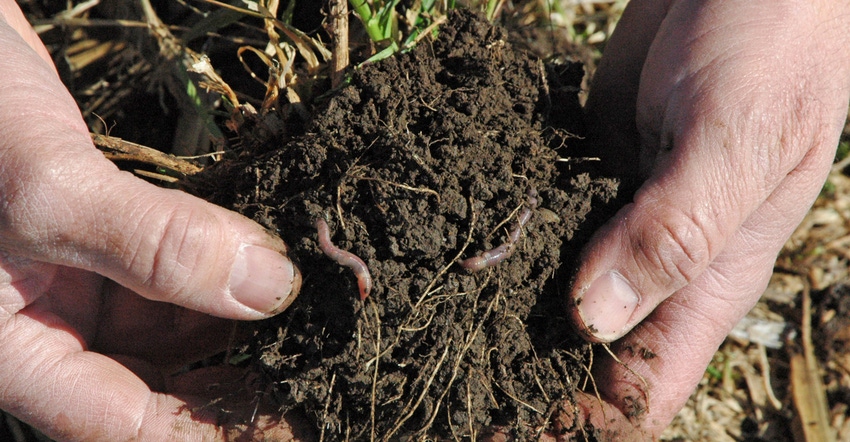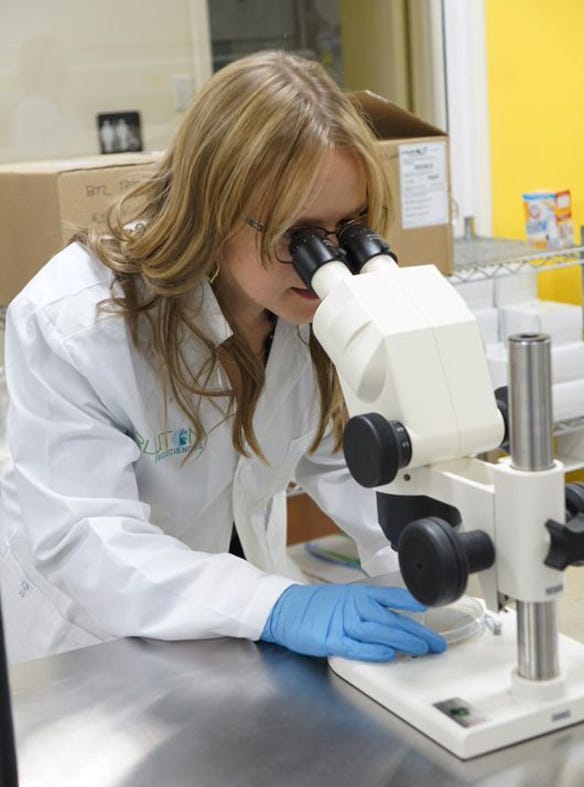
Barry Goldman has one goal — to find the next Bt-like row crop breakthrough but for carbon sequestration.
“There are a trillion species of microbes, and the industry has been looking at the same 100 for a long time,” the founder and CEO at Pluton Biosciences says. “But for instance, if you keep looking at the same Bt, you'll never find anything new. We believe we can find the next breakthrough for carbon sequestration because we're looking outside the common organisms. We are looking in the massive diversity that's found in all soil.”
Goldman worked with Monsanto in bioinformatics just as the genomics revolution started. He was there when gene sequencing of rice and corn began. “Those molecular markers really enabled us to do the next generation of breeding,” he says.
Later, he took a position at Indigo Ag, which was strictly biologicals, leading its microbial group.
Today, Goldman has founded St. Louis-based startup Pluton Biosciences, and is using all of his experience in genetic sequencing, biologicals and soils to find microbes to help farmers sequester carbon. The company is sequencing on a massive scale, to the tune of 15 trillion bases of microbial DNA from soil samples.
Microbes for carbon sequestration
Plants convert carbon dioxide from the air to produce energy. They deposit carbon in the soil through their roots, while releasing oxygen back into the atmosphere. When growers disturb the soil during planting and harvest, the carbon dioxide is released back into the atmosphere. Taking that carbon out of the air and putting it back into the soil is a new project of Pluton Biosciences.
There are two common ways to achieve carbon sequestration, Goldman says. One way has companies adding to the seed to increase biomass by improving roots. “That one is tough. You can increase biomass, but it’s a short life cycle,” he adds. “It goes in and goes right back out.”
The second, more common practice is to sequester carbon in the soil by planting cover crops. However, Goldman points out that it is difficult for farmers to make money. It costs money for growers to put out the cover crops, anywhere from $20 to $40 per acre.
That does not include the energy costs of multiple machine passes across the field. And while cover crops help with soil health, Goldman says it’s a long game that may not increase revenue directly for farmers.

FINDING MICROBES: It takes laboratory research to identify microbes found in soils that sequester carbon. Pluton Biosciences in St. Louis recently partnered with Bayer to discover such microbial agents.
However, Pluton Biosciences is looking at an alternative that costs less and provides immediate results. The company is looking at microbes as a cover crop. “Microbes can put nitrogen in the soil, and if developed correctly, they can suppress disease in the soil," Goldman says.
The product would be a soil amendment. He envisions a tank filled with microbes that farmers include in their spray practices. “We believe that farmers can do this at harvest, at burndown or at planting, and place the microbes out there to just grow,” Goldman says. He says that the process would scrub nearly 2 tons of carbon from the air per acre of farmland per year, all while replenishing nutrients in the soil.
He says microbial cover crops can be grown for $1 to $2 per acre, increase biomass and put carbon in the soil. To make the microbes a truly effective cover crop, the company is looking at organisms that fix nitrogen alongside the photosynthetic organisms.
“If we can reduce nitrogen inputs, you are essentially increasing the biomass and diversity of the soil with these microbes," Goldman says. "Instead of it just being carbon in and carbon out, you get carbon nitrogen complex to form biomass. And that is really what you want to build that ecosystem within the soil to store carbon and improve soil health.”
Company signs deal
Pluton Biosciences recently entered into a research agreement with global life sciences company Bayer AG to explore the development of an all-natural, microbial-based carbon-capture soil amendment for growers.
For Bayer, a company that committed to reducing field greenhouse gas emissions by 30% by 2030, long-term carbon storage in the soil is one way to reach this goal.
“By working collaboratively with partners like Pluton and the world’s farmers, our industry is uniquely positioned to sequester carbon on farm, as well as provide global environmental benefits and grower incentives,” Geoff Kneen, Bayer U.S. — Crop Science, Research and Development, Innovation Sourcing, adds.
Collaborating with Bayer’s Climate Change Group, Pluton will use its Micromining Innovation Engine to identify and develop microbes found in soil that can store carbon and nitrogen.
"We are very excited that Bayer has elected to partner with Pluton in advancing Bayer's global initiative to reverse climate change,” says Charlie Walch, Pluton Biosciences chief business officer. “Pluton-Bayer's carbon-capture amendment will allow growers to improve soil health in the field by sequestering carbon from the air. Our amendment will give growers an easy, cost-effective way to tap into the carbon credit market as it matures. The carbon credit market is in its infancy but is growing rapidly — projected to become a $14 billion market by the end of this decade.”
Success with pests
Pluton Biosciences started in 2017 with looking at novel microbes that could kill the mosquito that carries the Zika virus. They started by testing larva using a replicable process.
The company identified 10 novel microbes that controlled the mosquito. And given that there are a trillion species of microbes, Barry Goldman, Pluton founder and CEO, says it was no small feat.
Instead of looking at each individual microbe, his company looks at populations in groups of up to 500 organisms. “Now you can use sequencing of that population to say which one’s the winner,” Goldman explains. What normally took up to two years and about $2 million to develop an entire pipeline now, with genomic sequencing, takes six months.
The company continues to expand research into insects harming agriculture. It is searching for a remedy to Drosophila suzukii — a pest that is targeting fruit trees in Europe and the U.S. — where there is no control.
Pluton Biosciences is taking the same data-mining technique, dubbed micromining, into the soil amendment market with a goal of helping farmers sequester more carbon by adding microbes.
About the Author(s)
You May Also Like






